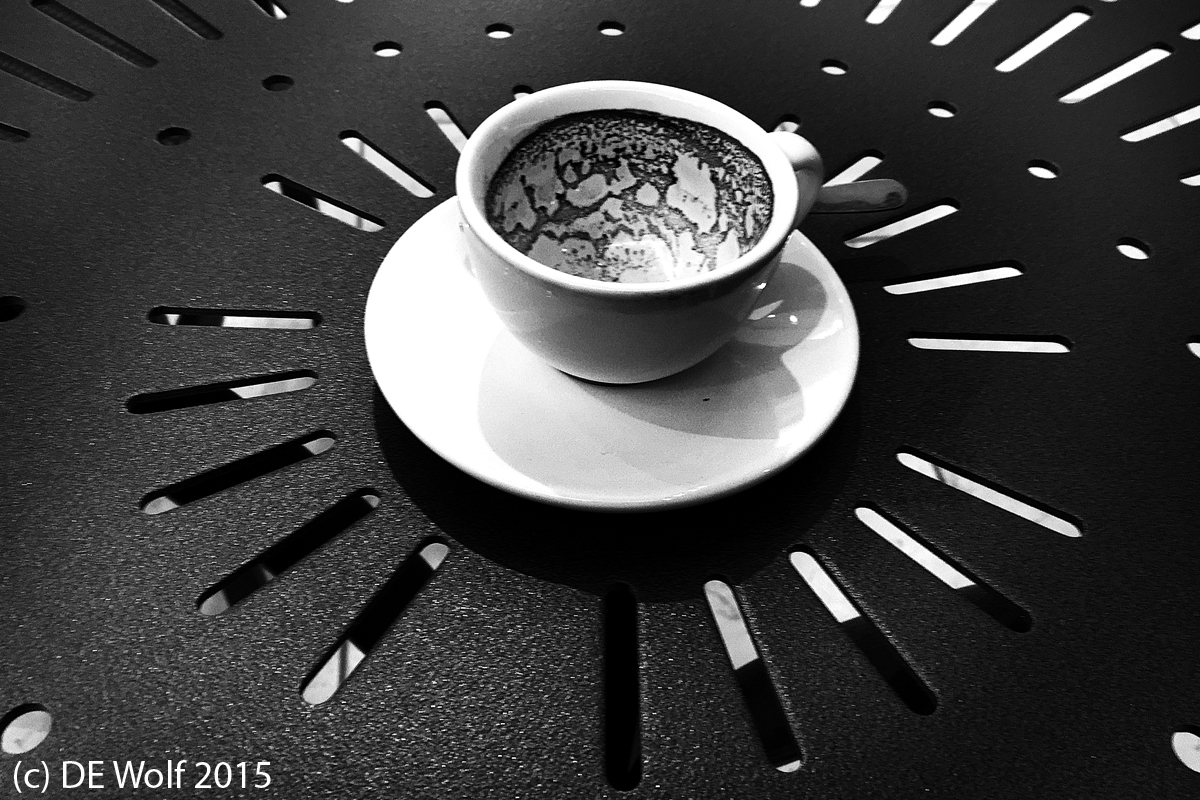Bill Clinton used to end his jogs at MacDonald’s. It was a nightmare for the Secret Service and the basis of one of the best SNL skits of all time. I’m not that bad. On weekends I tend to trade my long walks around Fresh Pond for a short walk around the mall that ends with espresso at the Nordstrom’s Ebar. And boy is it good.
Espresso, by definition, is, of course, coffee brewed by forcing a small amount of nearly boiling water under pressure through finely ground coffee beans. Espresso is generally thicker than coffee brewed by other methods and has a higher concentration of suspended and dissolved solids. Yum! The notable part, other than its incredible rich taste and ability to blast you into a caffeine frenzy is the foamy “crema“on top. These also result in the characteristic residue on the classic porcelain espresso cup, which I have made the subject of Figure 1. In a fantasy world we might imagine reading the future in the espresso lees as is done with tea leaves. Curious how pattern and message is associated with randomness. In the real world all that we can do is enjoy the flavor and the intense contemplation that it affords us.
The history of espresso is capsulized in the Wikipedia article about it. The precurser to espresso appears to lie in Angelo Moriondo’s 1884 Italian patent for a steam-driven “instantaneous” coffee beverage making device. This however was designed to produce coffee in bulk not on an individual-by-individual basis. In 1901, Milanese Luigi Bezzera came up with a number of improvements to the espresso machine. A patent was granted in 1902 entitled “Innovations in the machinery to prepare and immediately serve coffee beverage.”
As I said, espresso is classically served in a little porcelain cup with saucer and miniature spoon. In the photograph I have tried to capture the patterns of the residue on such a cup. And I’ll give a little derivative nod, since I certainly had it in mind when I took this IPhone image, to André Kertész‘s “The Fork, 1928.”


Kertesz is always on my mind when I look at B&W photos on tables, stairs, and walls. It only recently occurred to me how his photos are often like stills from “films noirs”. *****
Your espresso cup, when viewed with weaker, computer-distance glasses, looks like chinoiserie patterns, such as might be found on bone china. (ranges of mountains; pine trees)